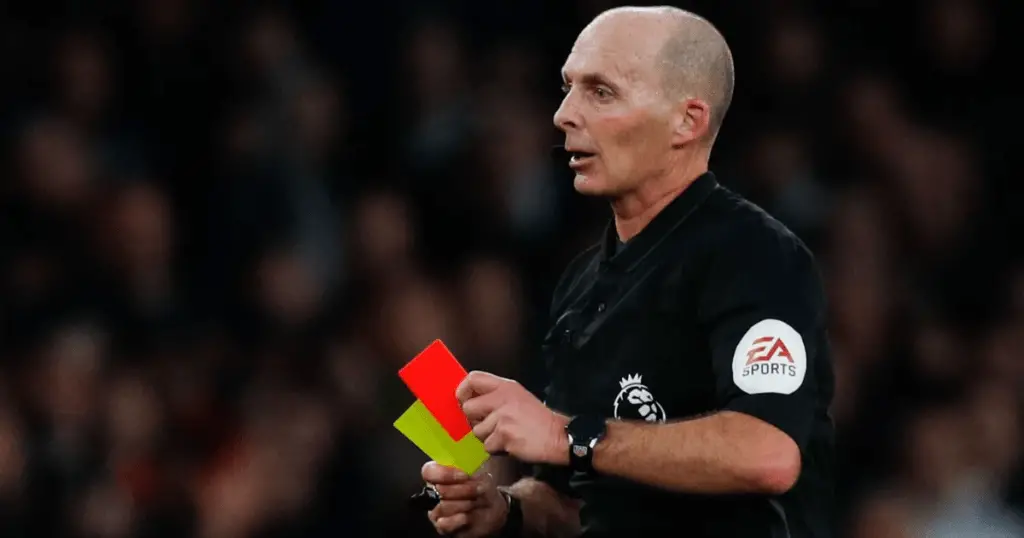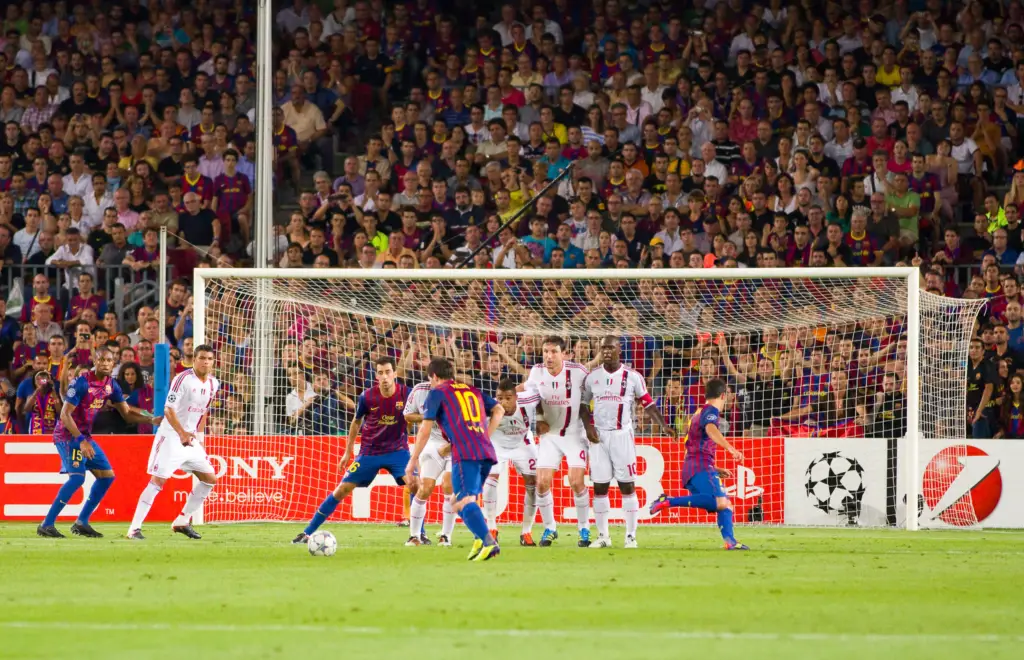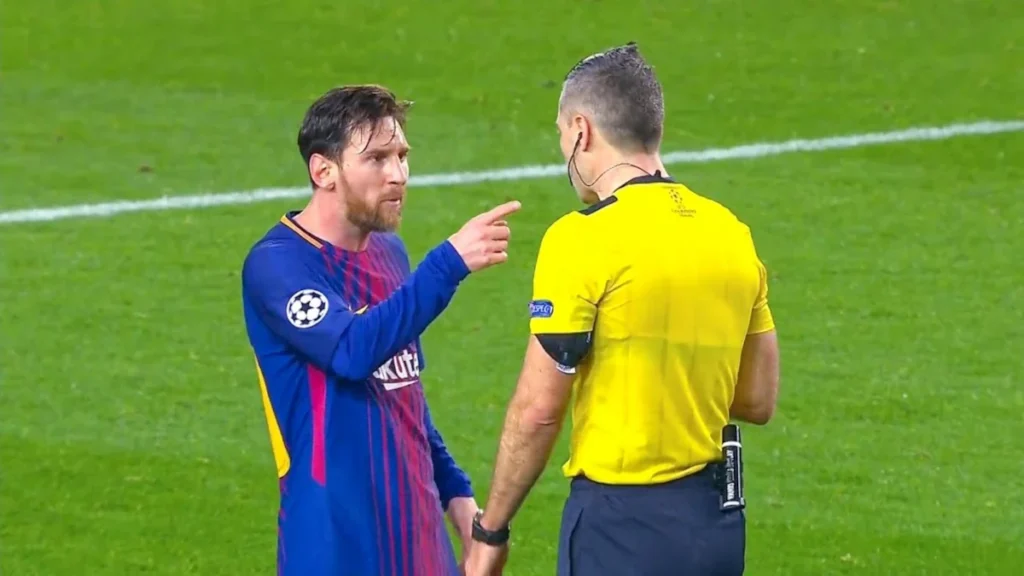Weirdest Football Rules: Watching the game right now it feels like all the laws have finally been standardized. Apart from the recent introduction of VAR, for the most part, most people watching the game know what’s acceptable and what’s not.
However, if you were a fan just over 100 years ago, that wouldn’t have been the case at all. Because the game was just becoming mainstream, rules were changing thick and fast, and some were more bizarre than the others.
Weirdest Football Rules
In this article, we’ll be looking at 10 weirdest football rules that will have you go “huh? Why the heck did they do that?”
10. No Substitutes

Three years ago, both Jurgen Klopp and Pep Guardiola were complaining that the English FA was only allowing for three substitutes, while the rest of Europe were allowing five because of the effects of the pandemic.
Well, if these guys were coaching before 1965, they would’ve pulled all their hair out or beards in the case of Pep. Because as a rule, substitutes simply weren’t allowed in the game.
Shop quality jerseys at Goal90.shop

You were only allowed to select the eleven players who would feature in the game. If your player got injured during the match, you’d have to play with ten men.
The first time substitutes were allowed in professional games was in 1965, and for the first two seasons, each team was only allowed one substitute. A player who could only replace an injured player. It wouldn’t be until much later that tactical substitutions would become a thing.
9. Two points for win
Manchester City’s 100 point season is still the best points tally any Champion has ever gotten in English top-flight football. While their achievement is certainly one you cannot understate, the truth however, is that before 1981, it would have been impossible to achieve.

Why? Well because back then, winning a match gave you two points, not three. Drawing the game still gave you one point. As a result, teams didn’t try so hard to win games. They were more concerned about drawing the game because one extra point wasn’t such a big deal.
The English FA noticed this, and in an attempt to reduce the number of boring draws, they increased the incentive for teams to play for the win by increasing the number of points that are up for grabs.
Now, any serious-minded team plays for the win and sees a draw as two lost points, not one gained point.
8. Gold and Silver Goals
Golden and silver goals were basically an experiment, one that failed miserably, by the way. The golden goal basically meant that when a match gets into extra time, it’s simply the next goal wins. The golden goal instantly ends the tie, no matter what the clock says.

This rule existed for only nine years, but it still managed to cause a lot of uproar as it determined the winners of the two Euros that were played in that time.
To appease fans, FIFA thought of the Silver goal. Slightly better than the golden goal, the silver goal meant that if you scored in the first half of extra time, the opponent only had until the end of the first fifteen minutes to equalize, unless the time was over and you won.

Of course, the fans weren’t happy with this at all and the rules were eventually abolished after much outrage.
7. NASL Penalty Shootout
Today, across the pond, the MLS looks very much like football all across the globe. However, when it started in 1996, it looked very different from what you see today.

To make football more appealing to the average American sports fan, the MLS tried adopting some rules from other sports they were familiar with. However, none was as ridiculous and funny as the penalty kick shootout.
Used in the MLS from 1996, and in the North American Soccer League before that, the NASL style penalty shootout was basically the same as hockey. The attacker starts with the ball from 35 yards out, and has to score beyond the goalkeeper who’s rushing out from his post.
The problem with this penalty is that with the level of players we have today, it’ll be a goal every single time. Lionel Messi will score 700 straight panenkas and the goalkeeper wouldn’t be able to do anything about it!
6. Fair Catch
Maradona was best known for his famous phrase “the hand of God” after asked how he scored his first goal against England in the quarter finals of the 1986 FIFA World Cup.

However, if Maradona was playing in 1863, he wouldn’t have had to use the hand of god because any player could catch the ball with their hands at that time.
It was a rule called “fair catch.” Every single player on the field was allowed to catch the ball from a pass, as long as they didn’t move the ball with their hands. You simply catch the ball and place it on the ground to continue playing with your feet.

This law didn’t stay too long, though, as in 1870, all handling of the ball was prohibited. Now you might be wondering, what about goalkeepers?
Well, goalkeepers didn’t exist when fair catch existed. It was only after the rule was annulled that the goalkeeping position was created, and the goalkeeper became the only player who could handle the ball with their hands to protect their goal.
5. Away Goal is Two Goals
UEFA has just scrapped the away goal rule from all UEFA club competitions. This means that now, only the team who outrightly wins the tie in two legs, wins the game. So we would never see a match like the Tottenham vs Man City Semi-final ever again.

However, away goals were far more important than just a tie decider after a cumulative draw in two legs of matches. Away goals were worth two goals before.
In 1994, Barbados faced Grenada in the Caribbean Cup. Barbados needed a two-goal margin to qualify from their group. So when Grenada scored one late in the game to make it 2-1, Barbados knew that they had to do something unless they would lose.

So they intentionally scored an own goal to make it 2-2, which took the game into extra time. They then scored two more goals in extra time to win the game 4-2 and scale through the group. Of course, Grenada was furious! And so the away goal rule was changed.
4. No Cards
Before 1970, there were no Yellow and Red cards in football. Cautions and sending offs were introduced as far back as 1881. However, it wasn’t until almost a century later that visual representations of these cautions would be created.

In 1963, during a match between Chile and Italy, Ken Aston, an English referee, sent off Giorgio Ferrini. However, because of the language difference, Ferrini didn’t understand what the referee was saying, and so didn’t leave the pitch.

After the game, Ken was perplexed and started thinking of ways he could communicate his decisions to players even with language barriers.
So while driving down the streets of London on a random day, the traffic light hit red, and that’s when it hit Aston. Yellow means take it easy, and red means stop, you’re off.
He went straight to FIFA with his Eureka idea, and in 1970, the yellow and red cards were introduced to the beautiful game.
3. Back Pass Is Offside
People often say that Pele would never have scored his self-acclaimed 1000 goals if he lived in the era of offside and well, FIFA believed that, which is why the offside rule was introduced in 1863.

Before then, strikers could basically stay just in front of the goalkeeper, leaving the rest of the team back to defend. Once the defending team won the ball back, they lumped it up to the striker who was one on one with the goalkeeper every single time. And it basically became an NASL style penalty shootout with every out ball.
To stop this and promote building play from the back, the offside law stated that players were not allowed to make forward passes at all. If you made a forward pass, it was considered offside.

However, this created a slower-paced way more defensive game. And so the offside law got changed to where the attacker had to be behind at least 3 opponents, including the goalkeeper. And from there, the offside law has continued to evolve to what it is today.
2. Kick Ins
When you think about it, this law actually makes sense. Everything players do on the pitch, they do with their feet. Goal kicks, free kicks, corner kicks, penalty kicks. So why are there throw-ins? Why not kick ins?

Well, in 1994, FIFA President Sepp Blatter said
“in two years the kick-in will replace the throw-in in the laws of the game, and then we will have an even faster game than we have now.”
However, FIFA never made this an actual law, although it was tested out in the lower leagues of England, Belgium, and Hungary. However, when kick-ins basically turned to free-kicks from outside play, it had the opposite effect Sepp Blatter said it would and slowed the game down tremendously. So of course, it didn’t last very long and was completely abandoned.
1. No Crossbar
Football used to look very much like rugby, until the games continued to be separated over time. One of the ways it looked most like rugby was in the goal.

In 1863, the goal was defined as two upright posts, 8 yards apart, without any tape or bar across them. Just like rugby goals, they were much narrower and basically extended up to the sky. Remember Bruno Fernandes’ penalty against Aston Villa? Golazo!

It’s no surprise that just 3 years later, a tape was added to signify where the goal ends vertically. And in 1883, it became required to have a crossbar between the goal posts.
There you have it, ten of the most ridiculous football rules that no longer exist.









